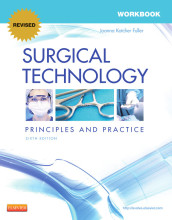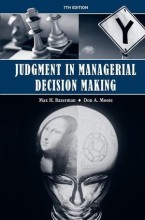Death and Dying
45 important questions on Death and Dying
When death occurs in surgery, the surgeon and anesthesia care provider must verify that the brain death has occurred; this is called _____ of death.
Rigor mortis, the natural stiffening of the body, begins approximately ____ after death and peaks at 8 to 10 hours.
After death, the collection of fluid that turns the ears and cheeks red or purple is called _____ mortis.
- Higher grades + faster learning
- Never study anything twice
- 100% sure, 100% understanding
A structured response may be required to help health care workers cope with death. This may involve planned _____ periods, or spontaneous expressions of support and acknowledgment by individual team members.
Because death in the operating room ____, the circulator must initiate all forms as for any sentinel event.
Communication with the dying patient requires ______.
The circumstances of the patient's death determine weather the corner must investigate the death; this process includes mandatory autopsy, and such a case is called a ?
Reactions and coping skills available to health care professionals are influenced by the following factors, EXCEPT
1. lack of support
2. the health care professional's beliefs and values
3. previous experience with death
4. emotional well-being
Donors are registered in different ____ of the country, and the data are exchanged with recovery organizations
If no decision has been made by the patient, the attending ____must, by law, ask the patient and family to consider organ donation.
The ____ theory of death is considered by some too constricting and does not allow for individualism in the experience of death.
Immediately after death, the body begins to cool, all sphincter muscles lose tone, and the patient then will lose control of ____.
The family's reaction of grief and sadness may accompany bouts of ____ with the health system, each other, and even the dying family member.
Effective and compassionate communication with the family and the patient is enhanced by understanding some of the more common problems families face. These not only include the _______ effects of grief but can also be related to the patient's medical care, or to the practical aspects of finances and estate issues.
Assisted suicide is perceived by many as an intent to _____.
Decisions about end of life care fall to the ______when the patient is not able to communicate his or her wishes.
Many cultures and faiths forbid organ removal after death, and these cases are usually _______.
Although grief and other deep emotion are present in all families at the time of death, these feelings are often mitigated by ritual and ceremony that ______.
To determine brain death, specific medical assessment may be carried out on the patient to determine absence of breathing, the response to painful stimuli, and the presence of _____.
During the aftercare procedure, the body is handled _____ and with ____ at all times.
Once the decision has been made for organ recovery, exacting clinical protocols are followed to ensure _____.
The types of emotions or even severe psychological events that health care workers experience may be ____ to those of the dying patient.
Health care worker often face personal conflict about the decisions made by their patients or the families of patients. They may not agree with the decisions, but they are obliged to ______.
A ______ is one in which tissue perfusion can be maintained during and immediately after death to preserve the life of the tissue.
The order to not resuscitate is made official by signing a DNR (do not resuscitate_ order, which is ___________.
Tissue that is harvested from the non-heart-beating cadavers include _____.
Belief in a greater power is a ______ need?
Practice of a particular faith is a ______ need?
Anxiety and fear is a ______ need?
Loss of security is a ______ need?
Fear of death is a ______ need?
Rituals and ceremonies is a ______ need?
Mechanical and physical processes is a ______ need?
Function and mobility is a ______ need?
All sphincter muscles immediately loss tone is ?
1. stages of grief and dying
2. natural changes in the body after death
3. advanced directive
Patient's feel great anger and remorse that they did not heed warnings to change lifestyles habits they knew were harmful
1. stages of grief and dying
2. natural changes in the body after death
3. advanced directive
An inner attempt to bargain with God or another spiritual entity
1. stages of grief and dying
2. natural changes in the body after death
3. advanced directive
The patient may refuse treatment in order to fulfill the right to die
1. stages of grief and dying
2. natural changes in the body after death
3. advanced directive
Areas of the body begin to collect fluid and areas around the ears and cheeks may turn purple or red
1. stages of grief and dying
2. natural changes in the body after death
3. advanced directive
Patients express anger; feelings of anger may be projected at family, self, health workers, or God
1. stages of grief and dying
2. natural changes in the body after death
3. advanced directive
Which stage of the theory of death is
" If I pray daily, maybe God will allow me to live"
Which stage of the theory of death is
Is a defense mechanism
Which stage of the theory of death is
The idea that death is no longer a source of psychological conflict
Which stage of the theory of death is
Patients may express anger at themselves by refusing treatment or nutrition
Which stage of the theory of death is
Accepting ______ as a natural result of dying and to treat it clinically
The question on the page originate from the summary of the following study material:
- A unique study and practice tool
- Never study anything twice again
- Get the grades you hope for
- 100% sure, 100% understanding
































